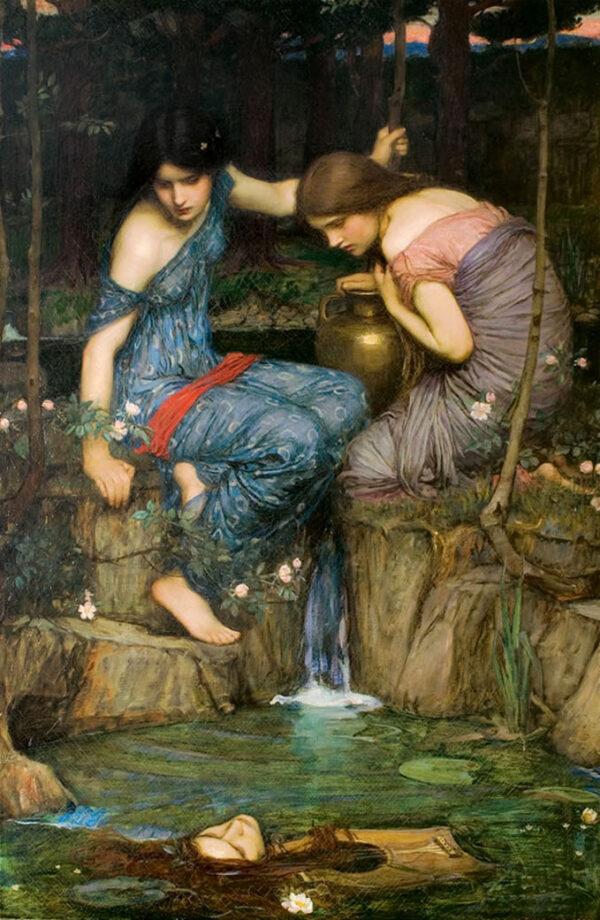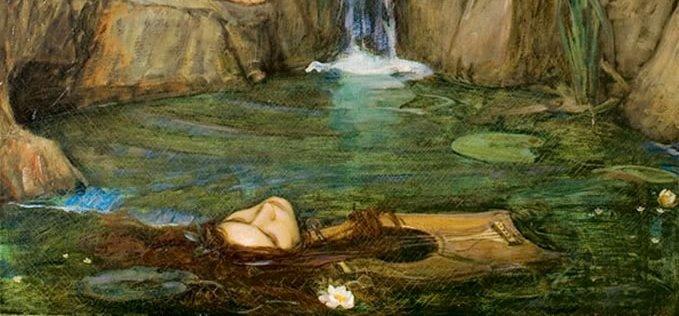There comes a moment in life in which we are made to reflect on who we are and who we wish to be. We stop casting blame for our circumstances and put effort into becoming the best version of ourselves. We may spend weeks, months, or even years cultivating ourselves into the heroes of our own stories.
But, there’s also that moment in life in which we are seduced by our own complacency; we become lax in our efforts and fall victim to temptations for which we will later suffer.
I recently came across a painting by the Pre-Raphaelite painter John William Waterhouse titled “Nymphs Finding the Head of Orpheus.” This painting stimulated in me a curiosity for how we deal with temptations and their consequences.

The Orphean Journey
According to Greek legend, Orpheus was born to the god of music, Apollo, and one of the muses. Orpheus played the lyre and sang beautifully, so beautifully that he was able to influence his immediate environment with his music.Orpheus fell in love with and married Eurydice. One day, Eurydice was bitten by a poisonous snake while attempting to escape an attacker. She died and began her journey into Hades.
Orpheus, inconsolable, decides to use the magic of his heavenly inspired music to enter Hades and save Eurydice. He sings his songs and plays his lyre so beautifully that he charms Charon, the ferryman who transports souls across the rivers Styx and Acheron, and Cerberus, the three-headed dog who guards the gates of Hades.
Orpheus sings and plays his way to the god Hades himself. On meeting Hades, Orpheus requests that Eurydice return to earth with him. Hades, moved by Orpheus’s beautiful music, agrees to return Eurydice to him on one condition: Orpheus cannot look back at Eurydice until they have left Hades.
Orpheus begins his journey with Eurydice out of Hades, but he is unsure if she is actually following him. He cannot hear her or feel her presence. Close to exiting Hades, Orpheus cannot bear it any longer and turns to look into Eurydice’s eyes, and as he does, she vanishes back into Hades.
Distraught, Orpheus puts his lyre away and refuses to sing anymore. He roams aimlessly until Dionysian maenads (manic female revelers) come upon him and rip him to pieces because of his depression. Other versions of the story suggest that the maenads rip Orpheus to pieces because he preached that Apollo, instead of Dionysus, was the greatest god.
Orpheus’s limbs were carried out to sea, and his head, whispering Eurydice’s name, washed onto the shore of Lesbos where it was buried by the muses.
‘Nymphs Finding the Head of Orpheus’
In “Nymphs Finding the Head of Orpheus,” Waterhouse depicted the moment in which Orpheus’s head and lyre float toward two nymphs. The nymphs seem to be gathering water at either dawn or dusk when the head and lyre happen upon them, and they look intently at the two floating objects.The focal point is the two nymphs: Their light complexion stands out against the darkness of the background, and this area of high contrast holds the viewer’s attention. Their line of sight and the water that flows from the rocks beneath them lead our eye to the secondary focal point: the head of Orpheus and his lyre.
Eyes to the Future
Orpheus’s story makes me think about the power of art. Art, when influenced by the heavens, can stir the soul in indescribable ways. Orpheus uses his heavenly inspired power of music to save Eurydice from Hades. To me, it’s as if all of Orpheus’s singing and lyre playing was practice for when he’d need to use them to save another human being.But Orpheus, overwhelmed by extreme desire for the one he loved, is unable to control the temptation to look at her. His inability to control temptation causes him to lose two things: Eurydice and his heavenly connection to music.
Ironically, temptation causes him to lose the very thing he desired. He suffers deep depression for his inability to control this temptation and is literally torn to pieces because of it.
The consequence of Orpheus’s inability to overcome his temptations haunts him into his afterlife. He, I think, becomes obsessed with a past he can’t change. Even in death, his head says the name compelled by his desire, and he floats alongside a lyre he cannot play.
Waterhouse depicts the two nymphs as distracted from their task when they see the objects float past them. They are stopped from collecting water—a source for sustaining life—by the floating head and lyre, which for me are representations of the consequences of falling victim to temptation.
Is it the case that temptation distracts us from the important things in life, the things that would sustain and fulfill our lives? Can the consequences of our own temptations negatively impact those around us?
With our eyes to the future, how might we deal with a past that haunts our present?
Art has an incredible ability to point to what can’t be seen so that we may ask “What does this mean for me and for everyone who sees it?” “How has it influenced the past and how might it influence the future?” “What does it suggest about the human experience?” These are some of the questions I explore in my series “Reaching Within: What Traditional Art Offers the Heart.”
Eric Bess is a practicing representational artist. He is currently a doctoral student at the Institute for Doctoral Studies in the Visual Arts (IDSVA).





